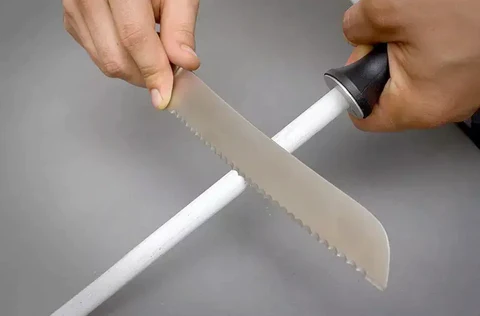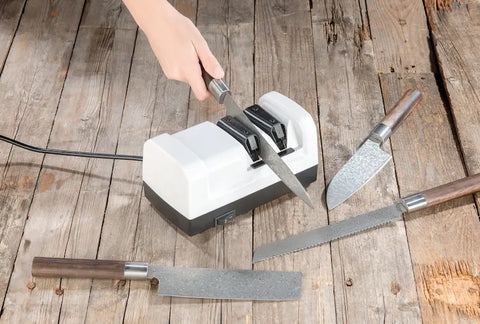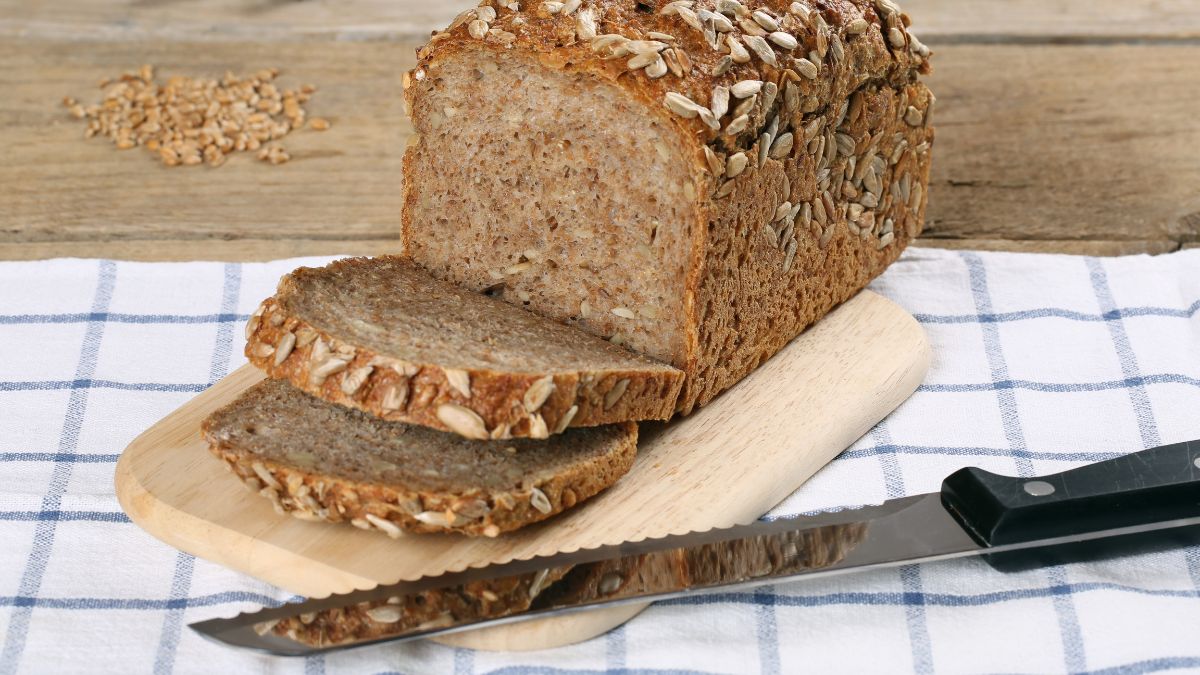How to sharpen a bread knife?
Sharpening a bread knife can be considered difficult. Some people even think it is impossible, but it is not. We have listed for you, 3 methods to sharpen your bread knife.
Sharpening with a ceramic rod
The best method is to use a ceramic sharpening rod. This allows you to sharpen tooth by tooth. It is important to choose a sharpening rod that matches the diameter of the serrations on your knife. If the sharpening rod is too thick, it will not fit properly on the serrations and the sharpening will be useless. Surprisingly, the bread knife is not covered in much detail on major sites like Wikipedia . The sharpening rod has a diameter of 8 mm and is therefore thin enough to sharpen most bread knives. The sharpening rod is a little thicker at 13 mm, but is suitable for many bread knives. There is also a sharpening rod that is 14 mm. This is a good choice for coarser serrations.

The knife is sharpened on one side only, usually the side. On most knives, you can easily distinguish which side the serrations are on. The knife is sharpened by placing the sharpening rod into the serrations, tooth by tooth, and moving it up and down. It is very important to check the edge from time to time during sharpening to ensure that the full length of the serration is achieved. You may need to hold the sharpening rod at a slight angle. We recommend that you place the bread knife flat on the edge of a table. This helps prevent accidents and makes it easier to achieve a qualitative sharpening result.
When you sharpen the teeth on one side, a burr will appear on the other side of the blade. You can naturally remove this burr by moving the knife at a slight angle over a sharpening stone. One downside to this method is that it can scratch the blade. Another option is to use the sharpening rod to go over each tooth one by one. This will remove the burr, but will not damage the back of the teeth.
Sharpening a serrated knife in a sharpener
The sharpener is the favorite tool of many home sharpeners. Many knives and kitchen knives have been given an extremely sharp finish on the sharpener. However, it can also be used to sharpen bread knives and serrated knives. To do this, the angular side of the sharpening rod should be placed on the side of the knife on which the serrations are located. On the other side, the flat side of the sharpener should be placed in the holder.
The side on which the serrations are placed is then moved very quietly along the sharpening side. This is the same as when sharpening a normal knife, except that it is much slower. This way, the angled side of the sharpening rod can sharpen between the serrations. Make sure you have the right angle when sharpening. You may have to hold the knife at a steeper angle than an average chef's knife. Do this about 5 times. Then very slowly move the knife once along the other sharpening rod. This way you remove the burr that has formed after sharpening the serrations. Here too, you have to pay attention to the angle, because it is different for every knife.
Sharpening a serrated knife in a knife sharpener
Some electric sharpeners can also sharpen serrated knives. To do this, the dull serrated knife must go through the final polishing step of the machine. This will sharpen it, but in the long run, you will notice that this knife will lose its serrations as they wear down.








How to sharpen a knife with a water stone?
Which Japanese knife for fish?